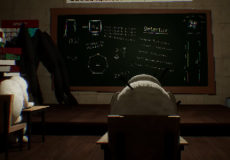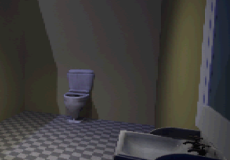

Zoonomaly
Advertisement
Zoonomaly is a first-person horror exploration game centered on surveillance and pattern recognition. The player operates as a night guard in an animal research facility, monitoring security systems to detect unusual activity. The main objective is to identify anomalies—changes in environment, movement, or form—and respond before they escalate. The game uses limited perspective and controlled camera feeds to create a sense of confinement. Instead of direct confrontation, progress depends on observation and decision-making under pressure.
Advertisement
Similiar games
Zoonomaly is a first-person horror exploration game centered on surveillance and pattern recognition. The player operates as a night guard in an animal research facility, monitoring security systems to detect unusual activity. The main objective is to identify anomalies—changes in environment, movement, or form—and respond before they escalate. The game uses limited perspective and controlled camera feeds to create a sense of confinement. Instead of direct confrontation, progress depends on observation and decision-making under pressure.
Core Systems and Gameplay Loop
Each session in Zoonomaly follows a time cycle divided into hourly segments. The player switches between cameras, checking for inconsistencies such as missing objects, shape distortions, or altered creatures. Reports must be filed correctly to neutralize the anomaly and continue the shift. Incorrect reports or missed detections increase instability, leading to system failure or player loss. The game’s structure encourages slow, methodical scanning and memory use to track what belongs in each room. Small visual differences become critical clues for survival.
Main systems that define gameplay include:
· Camera monitoring with multiple angles and room feeds
· Reporting interface for identifying anomaly types
· Time-based progression divided into shift hours
· Environmental degradation with each mistake
· Gradual escalation of anomaly frequency and complexity
Together these systems establish a cycle of tension between vigilance and fatigue, where the challenge is maintaining focus across long periods of observation.
Environment and Progression
Zoonomaly takes place in a closed facility divided into sections such as containment labs, corridors, and observation chambers. Each zone introduces new anomaly types—some visual, others behavioral. As nights progress, the player gains access to additional camera networks and report categories. Difficulty increases through both quantity and subtlety of changes. Memory retention becomes a core skill, as there are no external indicators when an anomaly occurs. The interface remains simple, reinforcing that success depends entirely on human perception.
Replay Structure and Learning Curve
Every shift in Zoonomaly plays out differently due to randomized anomaly placement and timing. This randomness ensures that memorization alone cannot guarantee survival. Players improve by learning to categorize events quickly and recognize anomaly behavior patterns. Over multiple sessions, efficiency and precision replace fear as the primary challenge. Endings vary based on performance and the number of successful reports filed before failure.
Discuss Zoonomaly




















